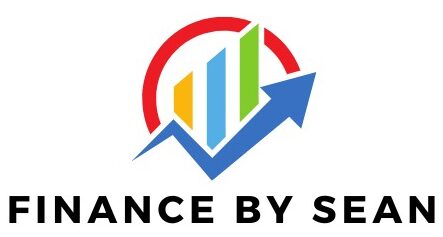Are you a Freelancer? Business Owner? Seasonal Employee? A snowboarding instructor in summertime? If you belong to one of these groups of people, look no further as we’ll talk about how to save your hard-earned money in a more systematic way.
Living with a fluctuating income can feel like riding a rollercoaster blindfolded—you never know what’s coming next (Honestly, I prefer to watch on youtube first and know that to anticipate or I would chicken out!).
The good news? Saving money doesn’t have to be complicated or impossible, even when your paychecks are unpredictable. Here are five specific, actionable tips to help you keep your wallet happy no matter what your income looks like.
Table of Contents
-
Introduction
- The Challenge of Fluctuating Income
- Why Saving is Still Possible
-
Automate Savings for High-Income Months
- Setting Up a High-Yield Savings Account
- Automating Transfers for Stability
- Using Budgeting Apps to Stay on Track
-
Create a Two-Tier Budget
- The Difference Between Low and High-Income Budgets
- How to Allocate Money Wisely
-
Stock Up During High-Income Months
- Essential Items to Purchase in Bulk
- Prepaying Expenses to Save Money
-
Use the Envelope Method for Variable Expenses
- How the Envelope System Works
- Digital vs. Physical Envelope Budgeting
-
Earn and Save During Downtime
- Extra Income Streams for Slow Months
- Cutting Unnecessary Expenses
-
Luke’s Step-by-Step Journey to Financial Clarity
- Real-Life Example of Budgeting and Saving
-
Conclusion: Treat Your Income Like a Business
- The Key to Financial Stability with Variable Income
- Small Steps for Big Financial Wins
1. Automate Savings for High-Income Months
When you get a windfall and make more money than usual and feel like a millionaire and are tempted to splurge? Instead, put that extra money to work for you.
How to do it:
- Open a high-yield savings account specifically for emergencies.
- Set up automatic transfers from your checking to savings whenever a big deposit hits. Start with 20-30% of your income during high months.
- Use budgeting app like RocketMoney to track where your money is going.
💡 Pro Tip: Label your savings account something motivational like “Rainy Day Fund”, “FU money” or “The Quarterly SeaFood Splurge Fund” because why not? It also reminds you why you’re saving.
2. Create a Two-Tier Budget
A one-size-fits-all budget doesn’t work when your income is unpredictable. Instead, create a two-tier budget: one for low-income months and one for high-income months.
How to set it up:
- Low-Income Budget: Focus only on essentials like rent, utilities, groceries, and transportation.
- High-Income Budget: Cover your essentials first, then allocate the rest for savings, debt payments, or occasional treats.
📝 Example:
- Low: $1,500 for essentials only.
- High: $2,500 with $500 going to savings and $500 toward paying off debt or treating yourself responsibly.
3. Stocking Up During High-Income Months
Treat your high-income months as an opportunity to prepare for the lean times.
What to stock up on:
- Non-perishable groceries: Canned goods, rice, pasta, and frozen veggies.
- Household essentials: Toilet paper, detergent, and toiletries.
- Prepaid expenses: Pay for annual subscriptions or insurance premiums when you can afford them upfront (they’re often cheaper than monthly payments).
💡 Pro Tip: Shop in bulk like going to costco or when come across your favorite instant noodles for 75% off, buy a boat load and you’ll thank yourself later(just make sure it’s not going to expire anytime soon lol).
4. Use the Envelope Method for Variable Expenses
Control your spending by dividing your variable expenses (like groceries or dining out) into physical or digital “envelopes.”
My wife, when I was getting to know her, actually did this method when we were in the Philippines. At first I giggled because I found it so unique and a hassle but it made sense to me.
Physically she would be able to see how much she has left for each month, if she finds herself running out of budget for miscellaneous spending, she would just put it off for the next month if it’s not needed. (talk about delay gratification!).
How it works:
- Withdraw a set amount of cash or use budgeting apps like Rocket Money or YNAB to create spending categories.
- Once an envelope is empty, you’re done spending in that category until the next budget cycle.
📌 Example Categories:
- Groceries: $500/month.
- Entertainment: $100/month.
- Dining Out: $200/month.
🛑 Warning: No borrowing from other envelopes unless it’s absolutely necessary.
5. Earn and Save in the Downtime
Your slow months don’t have to be financially dead. Use this time to bring in extra income or cut unnecessary costs.
Ways to save during downtime:
- Declutter and sell: Use platforms like Facebook Marketplace, eBay, or Poshmark to sell unused items.
- Freelance: Everyone has their inherent skills, make the most of it! Use sites like Upwork or Fiverr to make some mula in your freetime!.
- Slash subscriptions: Review your recurring payments and cancel any you’re not using.
💡 Pro Tip: Use free tools like Rocket Money to identify and cancel sneaky subscriptions.
Luke’s Step-by-Step Journey to Financial Clarity
Luke, a contractor in physical therapy, faced constant income fluctuations. Some months, he made $8,000, while others, he barely cleared $2,500. Struggling to manage his money, he decided to implement the following steps:
1️⃣ Opened a High-Yield Savings Account – Luke set up an automatic transfer of 25% from each paycheck into a dedicated emergency fund during his high-income months.
2️⃣ Created a Two-Tier Budget – He built a plan for both low and high-income months, ensuring that essential expenses were always covered first before discretionary spending.
3️⃣ Stocked Up on Essentials – During peak months, Luke bought non-perishable groceries, paid for annual subscriptions, and took care of large upcoming expenses in advance.
4️⃣ Adopted the Digital “Envelope” Method – He divided his monthly expenses into cash envelopes, preventing overspending in categories like dining out and entertainment.
5️⃣ Utilized Downtime Wisely – In slower months, Luke picked up freelance physical therapy consulting and sold unused household items online to supplement his income or write some blogs like this one.
After a year of applying these steps, Luke no longer felt anxious about his finances. He had built up three months’ worth of savings, could handle unexpected expenses without stress, and had a structured plan for managing his fluctuating income.
Conclusion: Treat Your Income Like a Business
When your income fluctuates, saving money requires planning and discipline. Treat your finances like a business—track everything, build reserves, and make every dollar work harder for you.
Saving doesn’t have to mean sacrificing everything you love; it just means being intentional. Start small, stay consistent, and watch your savings grow—whether your income is up, down, or somewhere in between.
Now I’d like to hear from you:
Which of the ones I talk about above you’re having the easiest and hardest time with?
Is there anything I missed or you would like to add?
Either way make sure to comment down below and make sure to check out our blog financebysean.com to read more about related stuff about finance like this!





